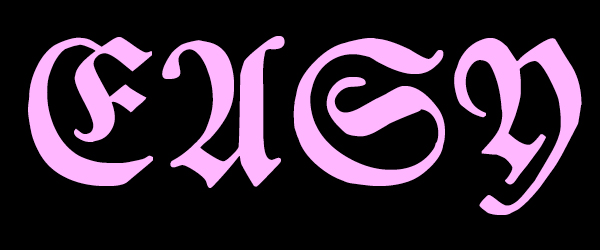As many Berlin expats can confirm, German is not an easy language to learn, due to its complicated grammar. What if you simplified the language in order for it to be understood by more people? This is a personal essay about my experiences with the concept of `easy language´ and the controversy it is causing in Germany.
———–
What we see influences our life.
What we do not see seems unimportant.
We rarely see people with disabilities in films.
But we want to see everybody.
The first time I read a text in „Leichte Sprache“ (literal translation: “easy language”), it reminded me of English: short phrases, simple sentence structure, no jargon.
Easy language is used to communicate with people whose mother tongue is not German or with people who have learning difficulties. Men like Jonas, an actor with Down’s syndrome who comes to work in a suit and likes his Martini shaken, not stirred. Or women like Zora, a.k.a. bold cat-woman, who pulls off a ten-minute monologue in cat language that keeps you glued to her lips.
Jonas and Zora are professional actors, but you never see them on German television. Even when a film tells the story of a disabled person, this character is usually played by an abled actor. The charity Rollenfang wants to change that and asked me if I wanted to design a visual identity for them. That is how I came to meet Jonas and Zora and many more actors with special needs or maybe more accurately with special knacks. We spent two inspiring days together to generate ideas for the new identity.
To get support from the industry, Rollenfang next wrote a charter outlining their goals and asked many important media people to sign it. But they also wanted their actors to be able to read and sign the charter. So they hired a bureau for low-barrier communication to translate their charter into easy language.
Simplicity and clarity are often the stated goals of a design commission. But not often are these goals taken so seriously. After translating the text, the bureau for low-barrier communication gave me very specific instructions for its layout. They advised me to start each sentence on a new line. They discouraged bold or italic mark-ups, as well as reversed type. They advocated a maximum colour contrast between type and background. And finally they offered to test the text in the finished layout.
Wait a minute – I know that you can test software, but how do you test a text?
You give it to experts to judge. In this case, expert testers have to have learning difficulties.
I am curious. That is why I find myself in a non-descript office building just off Karl-Marx-Allee in Berlin one late afternoon in Autumn for the easy-language evaluation of the Rollenfang charter. Easy language experts usually have a day job and do a bit of testing on the side. Everybody seems to know each other. The testers eye me curiously but are too shy to approach me directly. I feel equally shy, and therefore grateful for the appearance of Herr Nissen*, with whom I have arranged my visit. He shepherds us all into a small space that looks like a classroom with its tables in rows and the teacher’s desk at the front. I quickly slip into a seat in the back.
Herr Nissen distributes copies of the charter and introduces me as a curious client. He then starts the session by asking Herr Grothe to read the title out loud.
“Ch.. Cchh… Cha…”, Herr Grothe falls silent. We wait.
Herr Nissen moves on to his neighbour: “This is a difficult word, do you want to try, Herr Pötz?” Herr Pötz stares at the title. Me too: ‘Charter for Inclusion in Film’, – what were we thinking?
“Ch..Ch…Ch…shit word”, Herr Pötz finally says. I quietly agree. Nobody dares to laugh. Undeterred, Herr Nissen carefully pronounces the word ‘charter’ and explains that it means a document describing what a group of people sets out to do. Would we be able to suggest a different word to replace it?
“A plan” Herr Pötz volunteers, or “what we want to do” Herr Grothe suggests.
Herr Nissen notes these proposals down carefully.
“Now that we know how to pronounce the first word, would you like to read the whole title Frau Roppe?” Frau Roppe fearfully shakes her head.
Herr Grothe jumps in to help her: “ch..charter for inclusion in film”.
“What does the word inclusion mean, Frau Roppe”, asks Herr Nissen.
Silence – she looks to Herr Grothe for help. He pretends not to see. Herr Pötz can no longer hold back. With a triumphant side-glance in my direction, he exclaims: “Inclusion, we had that before! It means that everybody can join in.”
“Thank you, Herr Pötz.”
It takes us an hour to get through the page-long charter. It is an hour that makes a deep impression on me. It is not only the solemnity and dignity of it all. It is the humbling realization, that if Frau Roppe cannot read or understand my text, it is not because she is stupid, but because I have failed as a communicator.
Or to put it in easy language:
Communication means talking to each other.
When you understand what the other person says, the communication is good.
When you do not understand what the other person says, the communication is not good.
——–
We will tell all filmmakers what barriers there are for people with disabilities.
And how they can get rid of these barriers.
The work with disabled actors will bring diversity and new ideas.
Tomorrow morning our four-member jury will be judging the work of graduate communication designers. We have arranged to meet up for dinner in an Italian restaurant not far from our hotel. All the men seem to know each other. Opposite me sits the amiable TV producer who claims he is not sure why he was chosen to judge communication design. The philosophy professor next to him chooses the wine for us. The fingers of the seasoned graphic designer to my right have the dark stains of a man who rolls his own cigarettes.
After dinner, the conversation veers to our current projects. I talk about my discovery of easy language and the graphic designer goes outside to smoke a rolly. I talk about the fascinating testing session. The TV man shows a pained expression and glances at the philosophy professor who cannot concentrate on his tiramisu anymore. At last he interrupts me: “Easy language is just another tool to dumb down the German language and culture. It is a trend that you can see everywhere and it is dangerous.”
The TV man agrees: “Why not get rid of grammar altogether”, he asks sarcastically, “easy German is simply wrong German.”
Easy language does break certain spelling and grammar rules. For example it recommends writing sauer-kraut instead of sauerkraut to make it easier to discern its components. Another easy language heresy is to prefer “das Haus von dem Vater” (the house of the father) to the grammatically correct, but more complicated use of the genitive: “das Haus des Vaters”. But slicing a German compound word with an illegitimate hyphen or ignoring the genitive and replacing it with a primitive pronoun for the sake of communication, is a concession my fellow jury members are not prepared to make.
The graphic designer has come back, but the desserts are forgotten – there is a feeling of doom and I, with my presumably naïve political correctness, seem to personify the threat.
“Do you think it is okay that modern kids cannot properly write anymore?”
“You see these deficiencies everywhere! Just look at the language of the tabloids.”
“… or the comments on the internet!”
“… or the spelling on Facebook!”
“Just imagine – A-level students nowadays cannot even be expected to read Goethe anymore, because it is too difficult!”
I explain that the idea of easy language is not to replace ‘difficult’ German, but to complement it, especially where it is important to reach all members of our society. Do they remember the case of the Bremen election a few years ago? The council sent out election voting cards in easy language to reach citizens that normally do not go to vote. This caused an up-roar as loud as theirs. But surely they must agree that in this case it is more important that people go to vote, than to preserve bureaucratic gobbledegook?
“Easy language might be useful for m***** (insert a very rude word for people with Down’s syndrome here), but it is an insult to normal people to receive a letter by the council in easy language.”
Is it an insult to people who can walk, to enter a public building via a wheelchair ramp instead of a flight of steps? Why is it so threatening to acknowledge that our society is made up of different types of people and that others also have rights?
I think of Jonas and Zora and our workshop. The fun we had together – and how it had changed my perspective. Before the workshop I had thought that Rollenfang is a good thing only for disabled actors. After the workshop I thought that it would greatly improve our dull national television if Jonas really became the new ‘Tatort’ inspector.
Would my companions enjoy his performance? The way they glare at me, I doubt it. Why is this discussion becoming so emotional and aggressive? Who is insulting whom?
Seeing my frown, the philosopher pours me another glass of wine. He benevolently explains to me that we are having a conversation in the philosophical tradition, which the men present have all been trained in. He assures me that their indignation is therefore not directed at me personally. Any offence I might feel is only due to my ignorance.
Thank you, now I understand. They are being exclusive – I know that word! It is the opposite of inclusive. It means that not everyone can join in.
Or to put it in easy language:
When you understand what the other person says, you are part of the group.
When you do not understand what the other person says, you are not part of the group.
Exclusive communication is an easy way to keep people out of a group.
It is as easy as that.
———-
Introductory quotes are taken and translated from the Rollenfang charter. To learn more about their work visit their website or follow them on Facebook or Instagram.
To learn more about my work on the Rollenfang identity read this post
If you need to communicate in easy language, you might want to talk to the very competent people at Capito, the `bureau for low-barrier communication´

